Bar-Wave Calibration of Acoustic Emission Sensors
Abstract
:1. Introduction
2. Experimental Procedures
3. Results and Discussion
3.1. Displacement
3.2. AE Sensor Response
3.2.1. KRN Sensor
3.2.2. Other Small-Diameter Broadband Sensors
3.2.3. PAC R6a Sensor
3.2.4. Olympus V103 Transducer
3.2.5. PAC S9220 Sensor
3.2.6. Pico Sensor
3.2.7. PAC WD Sensor
3.2.8. PAC µ30D Sensor
3.2.9. PAC HD50 Sensor
3.2.10. PAC R15 Sensor
3.2.11. PAC R15a Sensor
3.2.12. PAC F30a Sensor
3.2.13. DECI SH225
3.2.14. Olympus V101 Transducer
3.3. Further Discussion
- Receiving sensitivities to bar waves and to normally incident waves are different for any given sensor.
- Differences in the sensitivities to bar waves and to normally incident waves increase with the increase in frequency above approximately 200 kHz with the bar-wave sensitivity becoming lower at higher frequencies. In the low frequency range, the opposite is usually observed; that is, the bar-wave sensitivity is higher.
- The differences at higher frequencies noted in b. above are smaller when the sensing area of the sensor is small, as in KRN and Pinducer sensors. In contrast, the differences are larger for larger sensors, like V101 and V103.
- Even when spectral flatness exists for the receiving sensitivity to normally incident waves, the receiving sensitivity to bar waves exhibits variable spectral responses. See for example, Figure 11, Figure 16 and Figure 20. For small aperture sensors like KRN and Pinducer, however, a limited range of flat bar-wave sensitivity does exist.
4. Conclusions
- Receiving bar-wave sensitivities of 16 types of AE sensors were measured and compared to their receiving sensitivities to normally incident waves. The two types of the receiving sensitivity always differed for a given AE sensor. For the selection of AE sensors, one needs to use the appropriate type considering waves to be detected.
- The bar-wave sensitivities of R6a sensors resembled their surface-wave sensitivities, provided by the manufacturer. The bar-wave sensitivity was 9.0 dB higher at the maximum than the peak sensitivity of the surface wave response. The peak frequencies were within 1.9 kHz on average for a given sensor. This indicates that the bar-wave sensitivities can represent the surface-wave sensitivities in typical AE applications.
- Using Choi-Williams transform, some bar-wave modes were identified by comparing peaks found on observed spectrograms with the positions on the dispersion curves for bar waves, calculated with the SAFE procedure [9]. However, numerous bar-wave modes prevented exact identification, especially above 500 kHz.
- Aperture or waveform cancellation effects contributed to the sensitivity reduction at higher frequencies in larger size AE sensors and to more fluctuating bar-wave receiving sensitivities even for sensors with smooth or flat receiving sensitivities to normally incident waves. Spectral dips observed in bar-wave results can be accounted for by aperture effect predictions reasonably well.
Acknowledgments
Author Contributions
Funding
Conflicts of Interest
Appendix A. Asymmetric Excitation
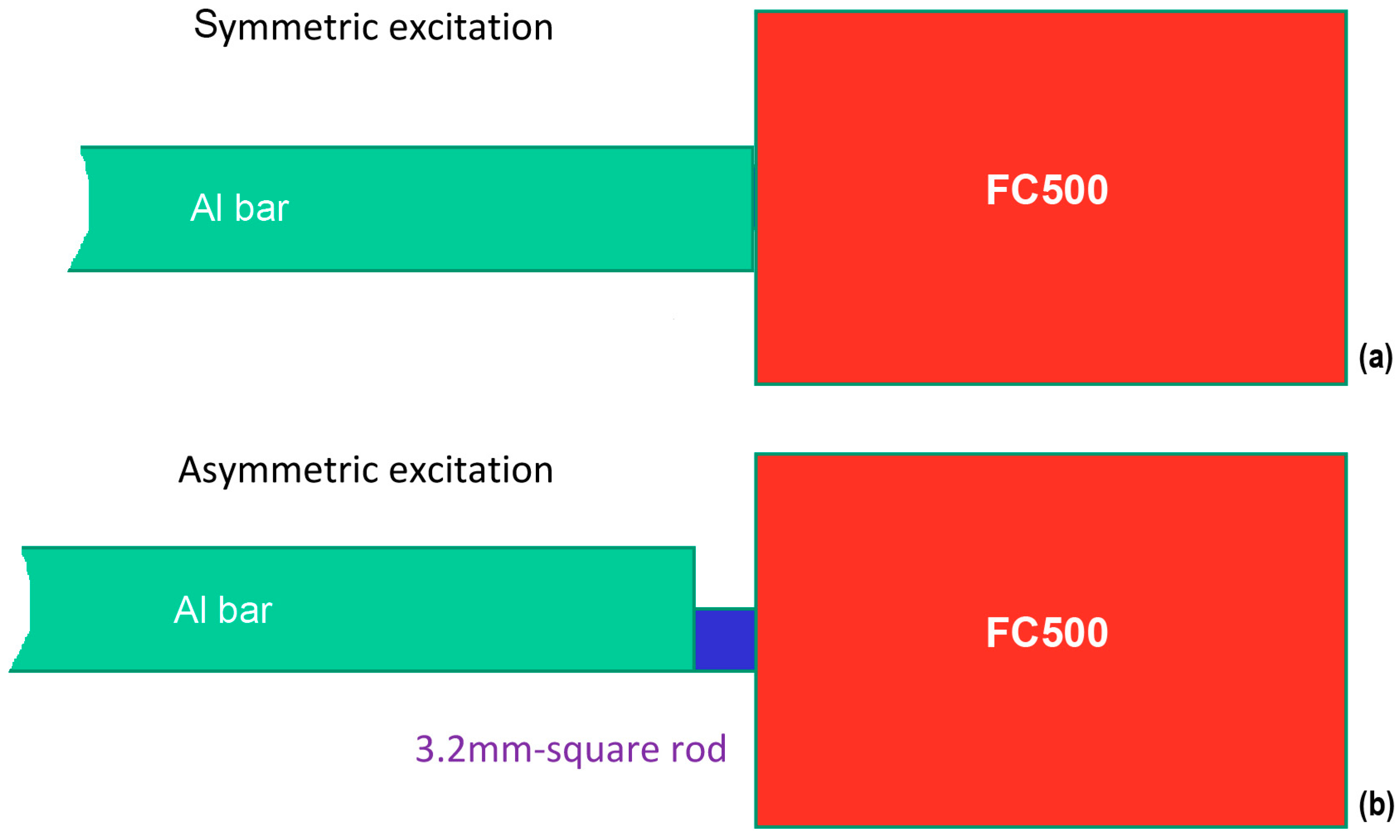
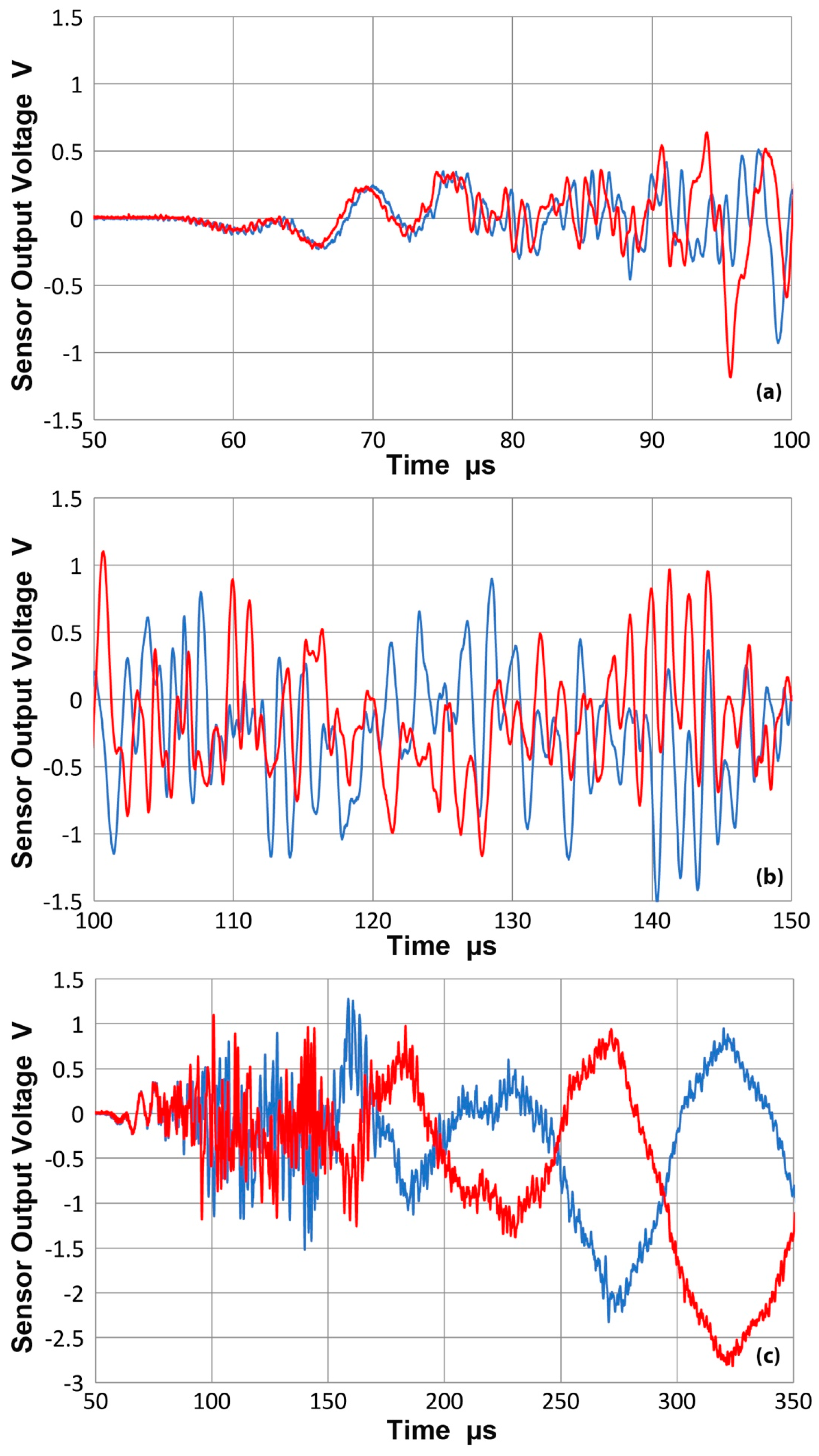
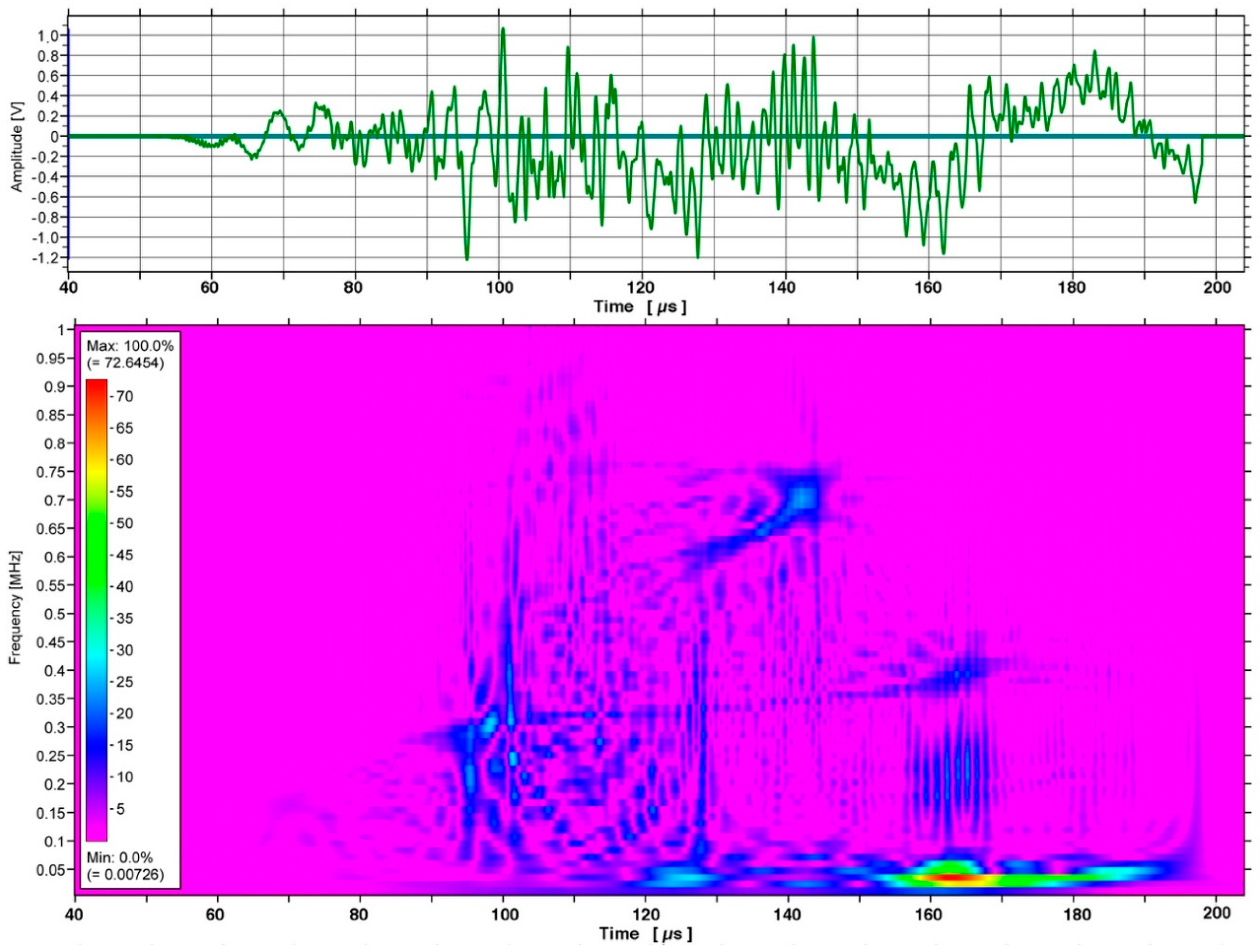
Appendix B. KRN Sensors without FET
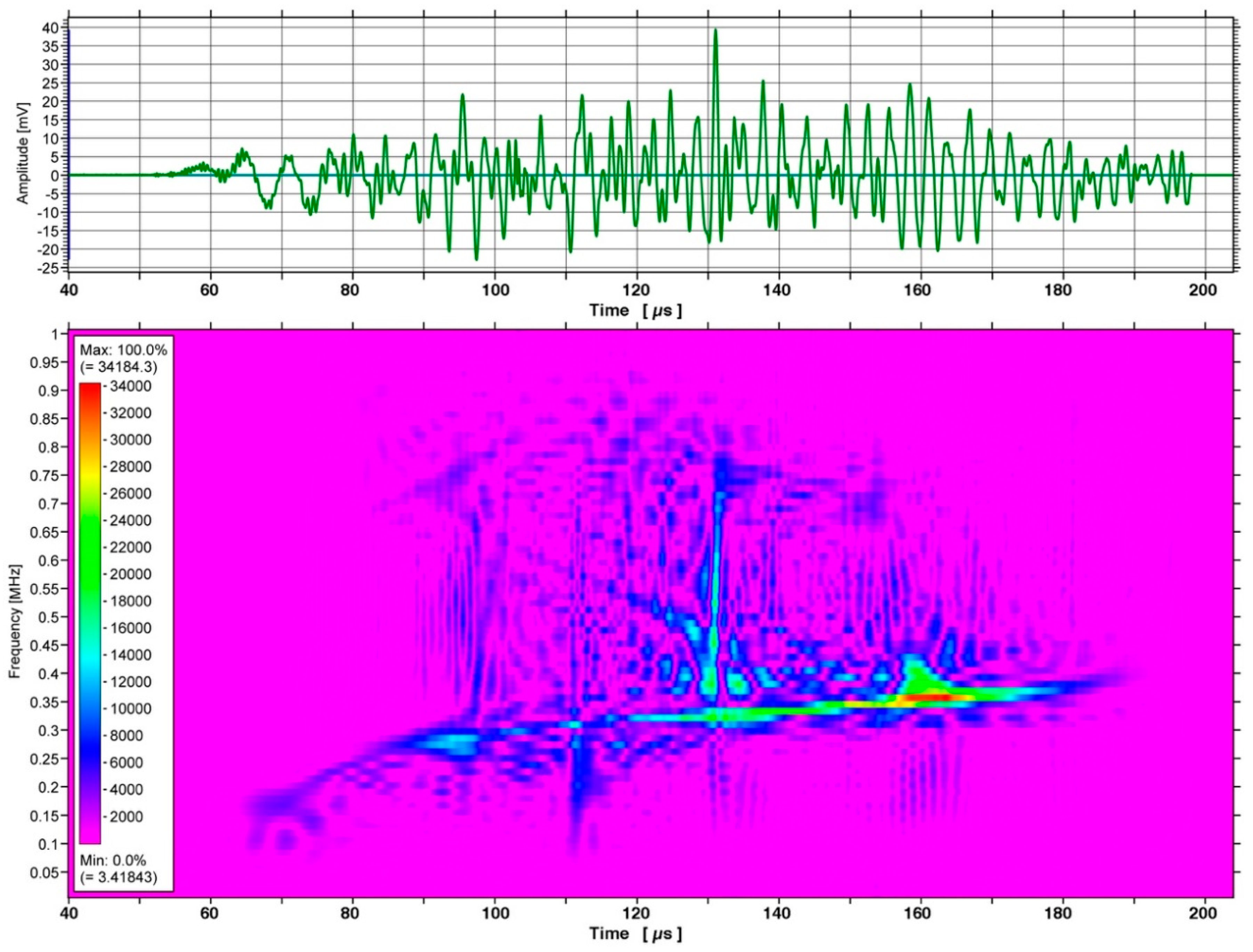
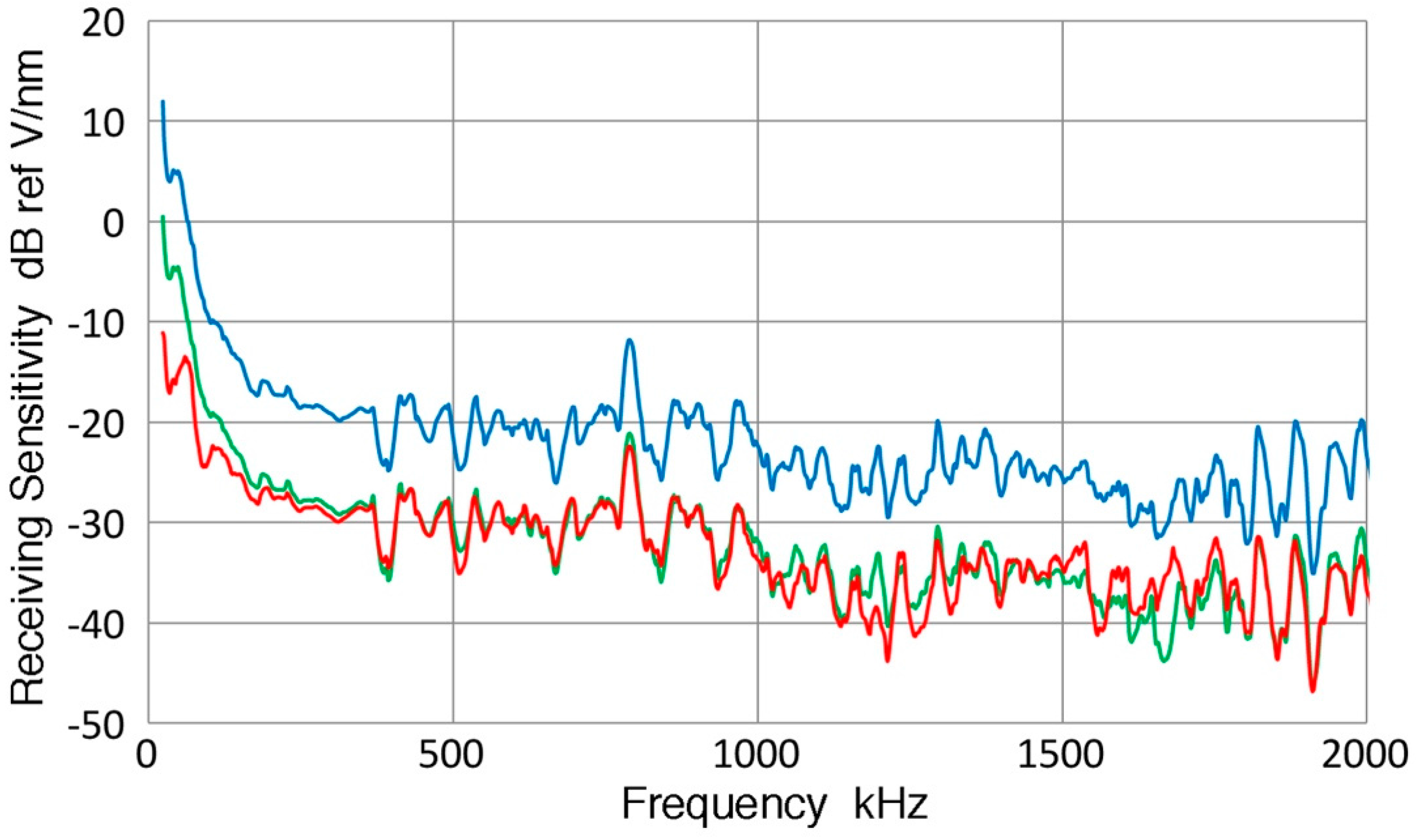
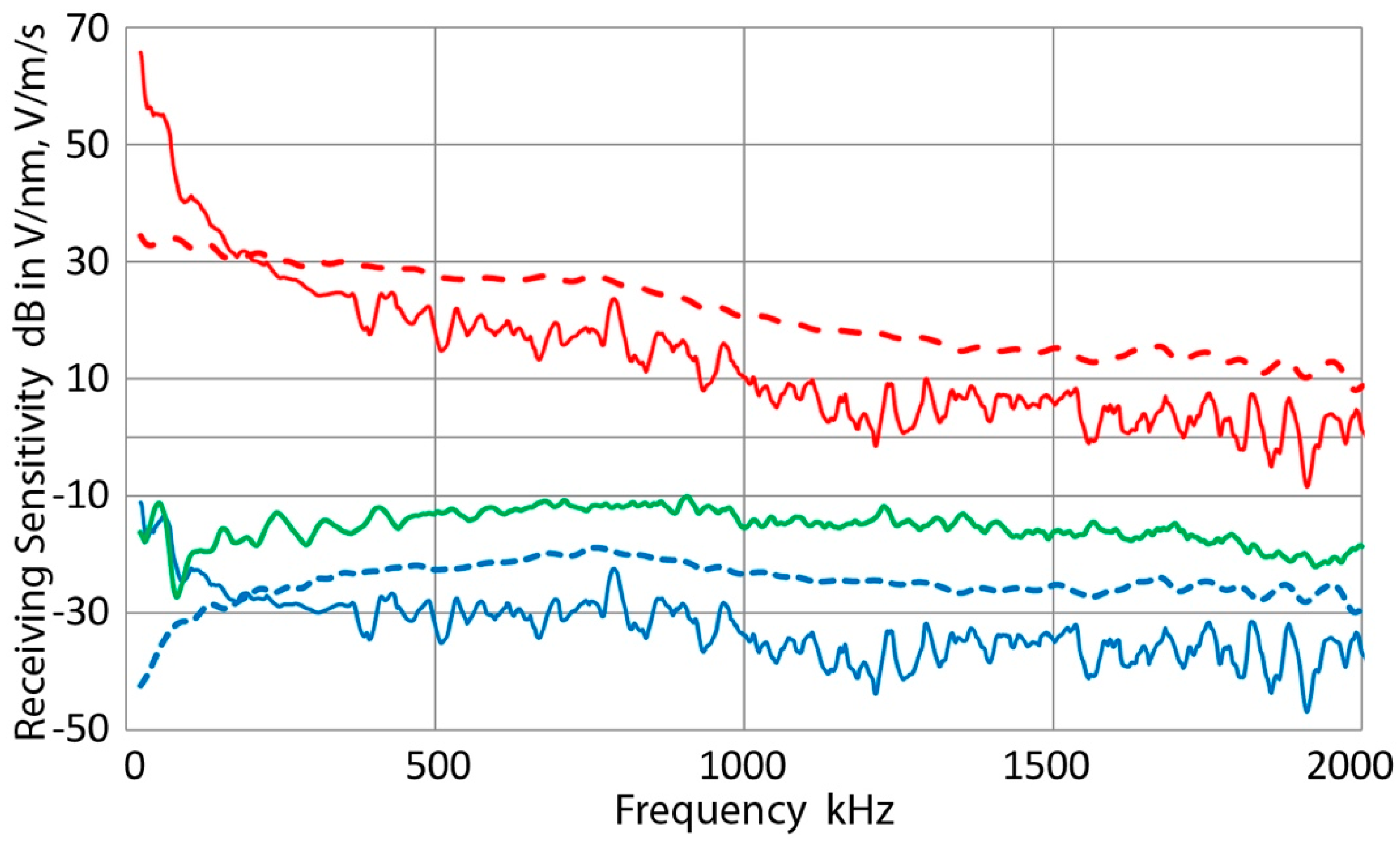

Appendix C. R6a Sensors
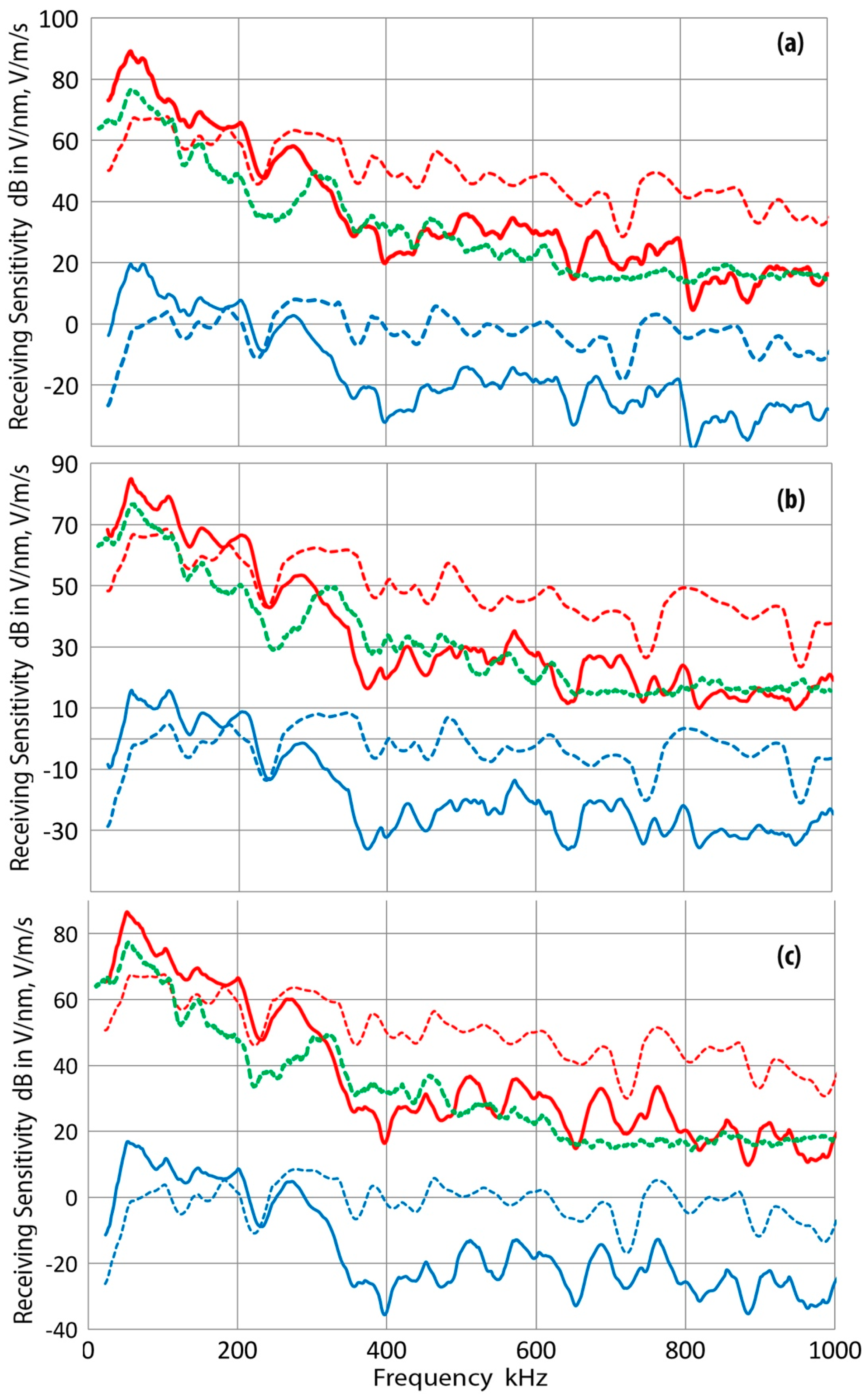
Appendix D. FET Buffer

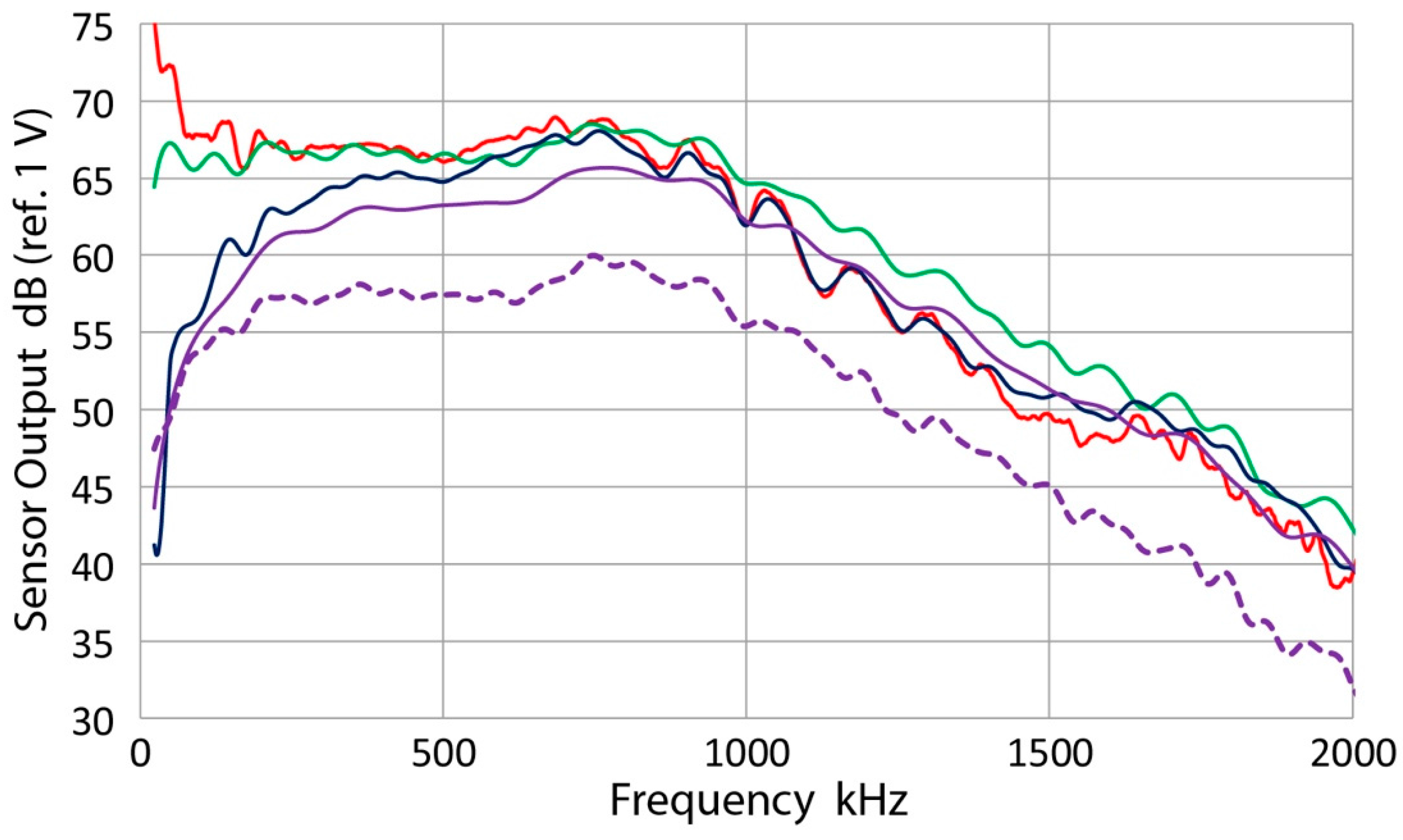
References
- Miller, R.K.; Hill, E.V. (Eds.) Nondestructive Testing Handbook, Acoustic Emission, 3rd ed.; ASNT: Columbus, OH, USA, 2005; Volume 6, p. 446. [Google Scholar]
- ASTM International. ASTM E1106-12 Standard Method for Primary Calibration of Acoustic Emission Sensors; ASTM International: West Conshohocken, PA, USA, 2016; p. 12. [Google Scholar] [CrossRef]
- ASTM International. ASTM E976-15, Standard Guide for Determining the Reproducibility of Acoustic Emission Sensor Response; ASTM International: West Conshohocken, PA, USA, 2015; p. 7. [Google Scholar]
- Ono, K. Calibration methods of acoustic emission sensors. Materials 2016, 9, 508. [Google Scholar] [CrossRef] [PubMed]
- Ono, K. Critical examination of ultrasonic transducer characteristics and calibration methods. Res. Nondestruct. Eval. 2017, in press. [Google Scholar]
- Hatano, H.; Watanabe, T. Reciprocity calibration of acoustic emission transducers in Rayleigh-wave and longitudinal-wave sound fields. J. Acoust. Soc. Am. 1997, 101, 1450–1455. [Google Scholar] [CrossRef]
- The Japanese Society for Non-Destructive Inspection. NDIS 2109-91, Method for Absolute Calibration of Acoustic Emission Transducers by Reciprocity Technique; ISOTR13115 (2011); The Japanese Society for Non-Destructive Inspection: Tokyo, Japan, 1991. [Google Scholar]
- Ono, K.; Cho, H.; Matsuo, T. New characterization methods of AE sensors. J. Acoust. Emiss. 2010, 28, 256–277. [Google Scholar]
- Hayashi, T.; Song, W.; Rose, J.L. Guided wave dispersion curves for a bar with an arbitrary cross-section, a rod and rail example. Ultrasonics 2003, 41, 175–183. [Google Scholar] [CrossRef]
- Hamstad, M.A.; Gary, J.; O’Gallagher, A. Far-field acoustic emission waves by three-dimensional finite element modeling of pencil-lead breaks on a thick plate. J. Acoust. Emiss. 1996, 14, 103–114. [Google Scholar]
- McLaskey, G.; Glaser, S. Acoustic emission sensor calibration for absolute source measurements. J. Nondestruct. Eval. 2012, 31, 157–168. [Google Scholar] [CrossRef]
- Greenspan, M. The NBS conical transducer: Analysis. J. Acoust. Soc. Am. 1987, 81, 173–183. [Google Scholar] [CrossRef]
- Proctor, T. An improved piezoelectric acoustic emission transducer. J. Acoust. Soc. Am. 1982, 71, 1163–1168. [Google Scholar] [CrossRef]
- Beattie, A.G. Acoustic emission, Principles and instrumentation. J. Acoust. Emiss. 1983, 2, 95–128. [Google Scholar]
- Goujon, L.; Baboux, J.C. Behaviour of acoustic emission sensors using broadband calibration techniques. Meas. Sci. Technol. 2003, 14, 903–908. [Google Scholar] [CrossRef]
- Monnier, T.; Seydou, D.; Godin, N.; Zhang, F. Primary calibration of acoustic emission sensors by the method of reciprocity, theoretical and experimental considerations. J. Acoust. Emiss. 2012, 30, 152–166. [Google Scholar]
- Kim, K.Y.; Castagnede, B.; Sachse, W. Miniaturized capacitive transducer for detection of broadband ultrasonic signals. Rev. Sci. Instrum. 1989, 60, 2785–2788. [Google Scholar] [CrossRef]
- Manthei, G. Characterization of acoustic emission sources in a rock salt specimen under triaxial compression. Bull. Seismol. Soc. Am. 2005, 95, 1674–1700. [Google Scholar] [CrossRef]
- Shiwa, M.; Inaba, H.; Kishi, T. Development of the high sensitivity and low noise integrated acoustic emission sensor. In Progress in Acoustic Emission, V, Proceedings of the 10th IAES, JSNDI, Sendai, Japan, 22–25 October 1990; Japanese Society for Non-Destructive Inspection: Tokyo, Japan, 1990; pp. 605–612. [Google Scholar]
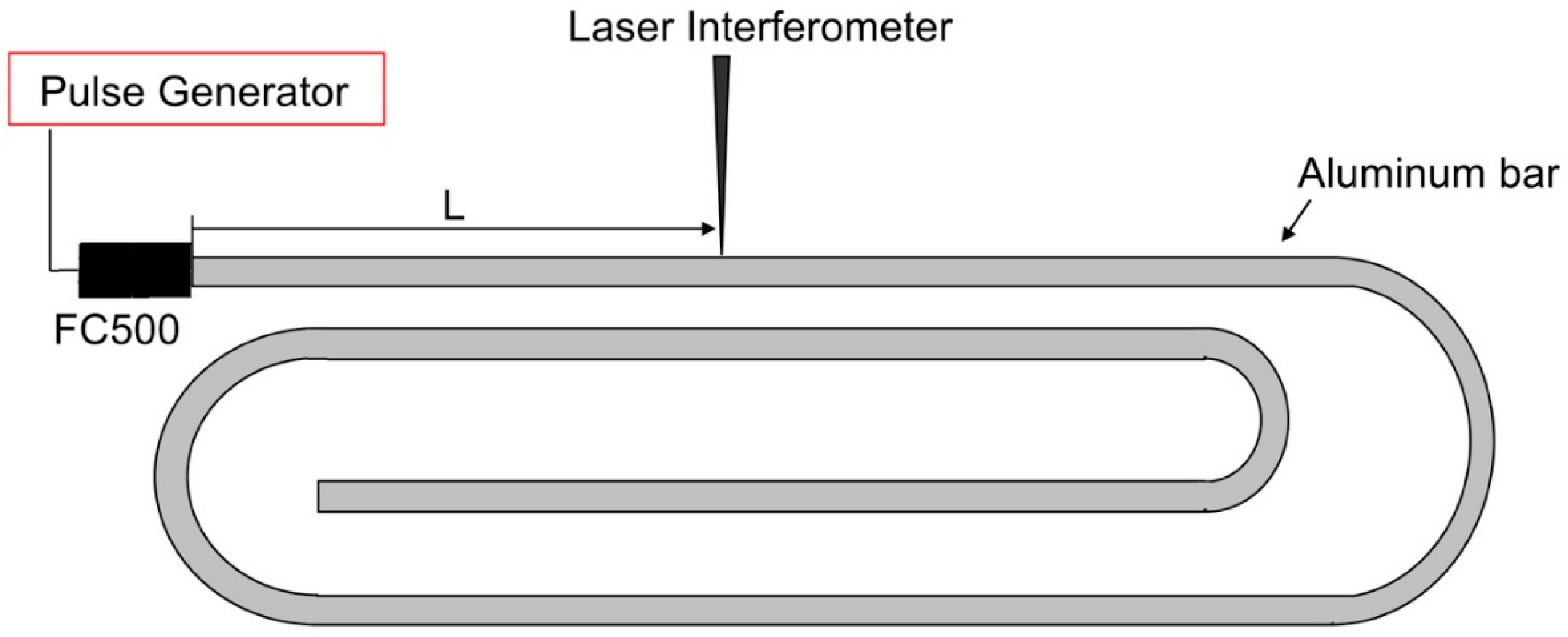

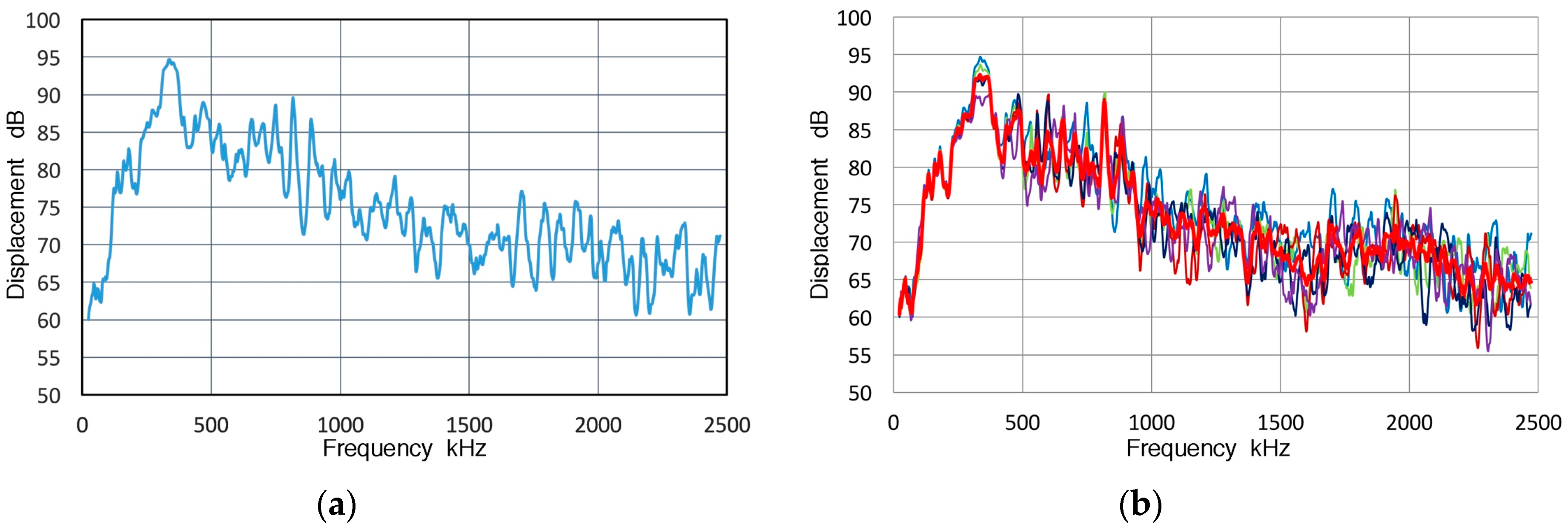
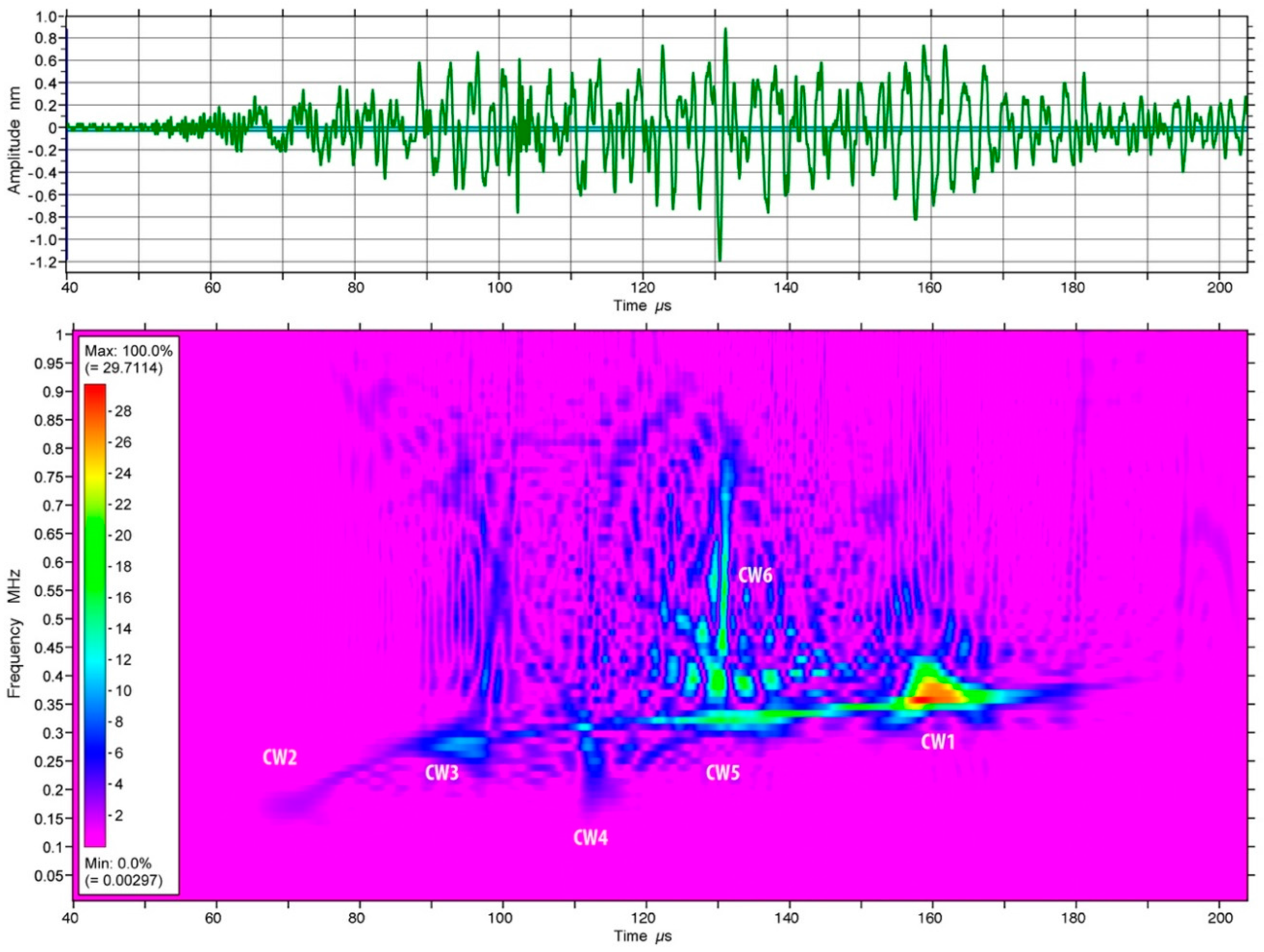
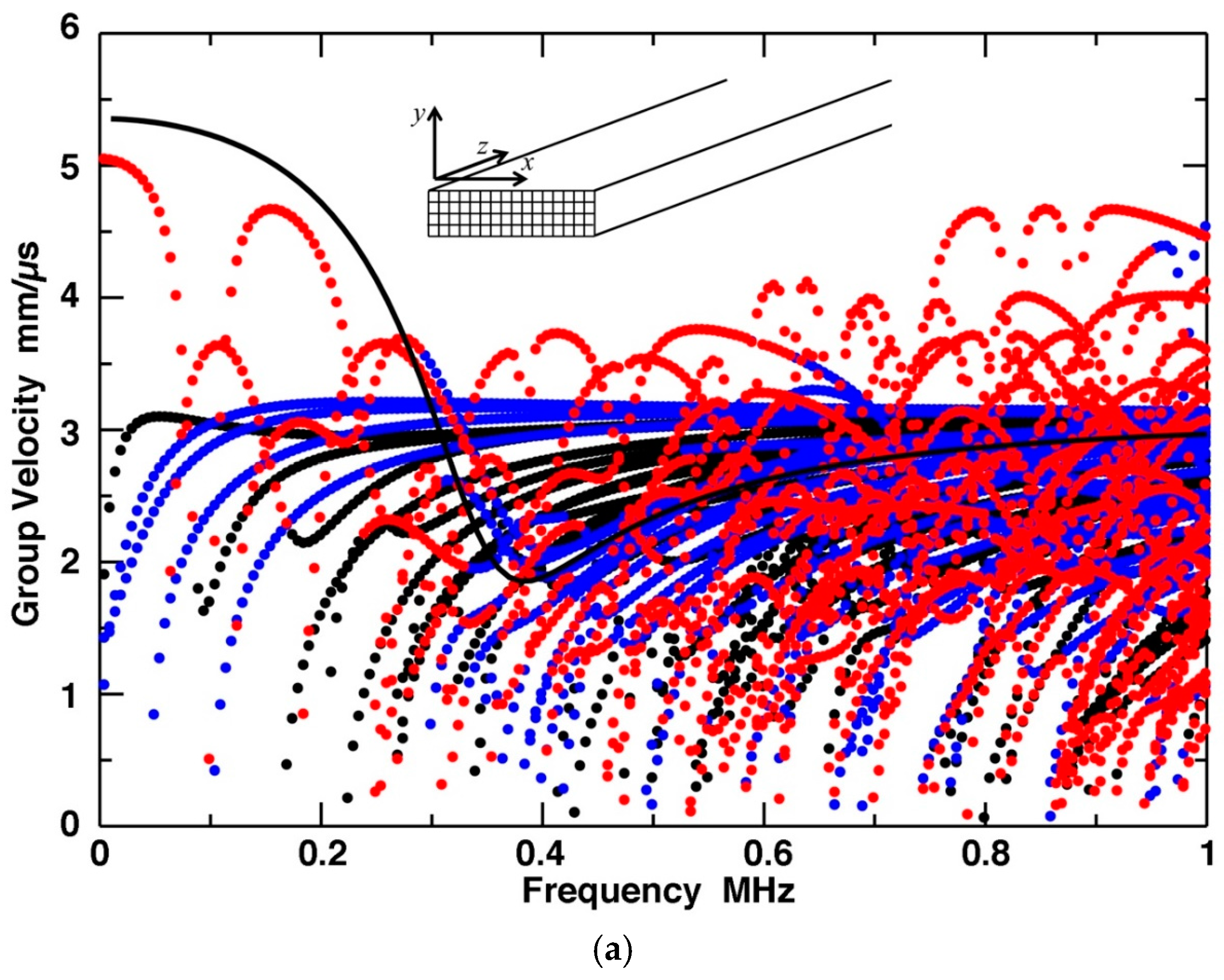
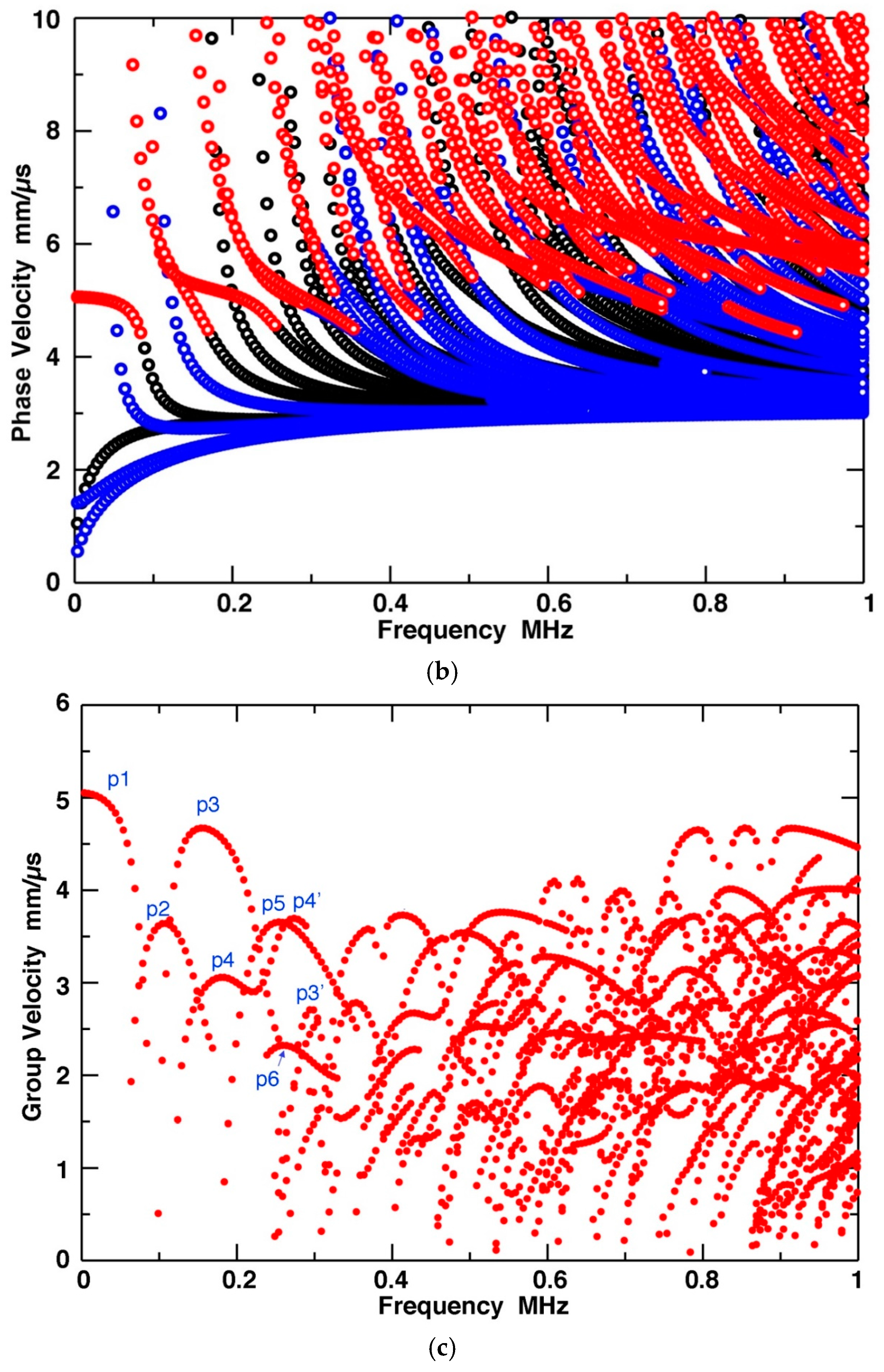
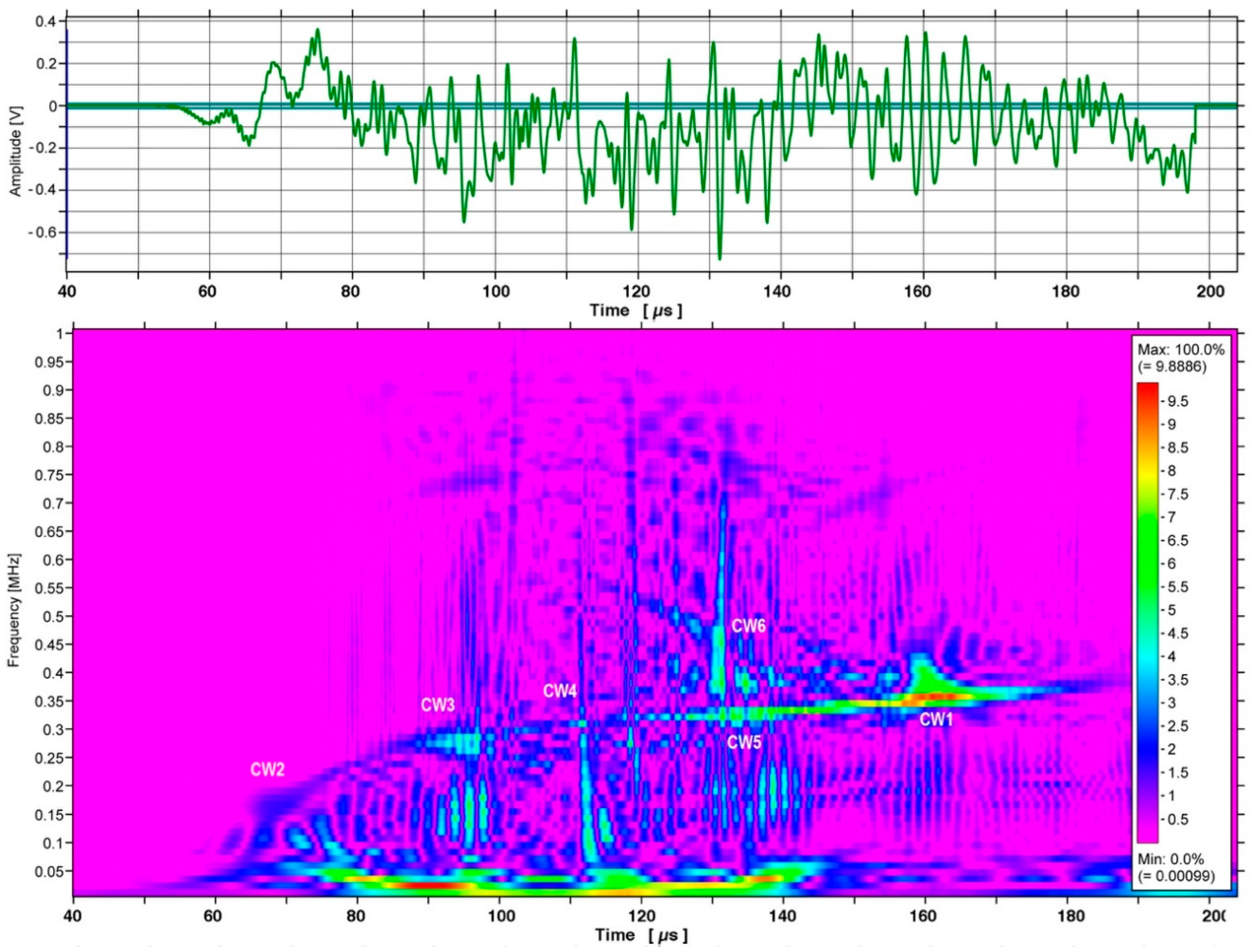

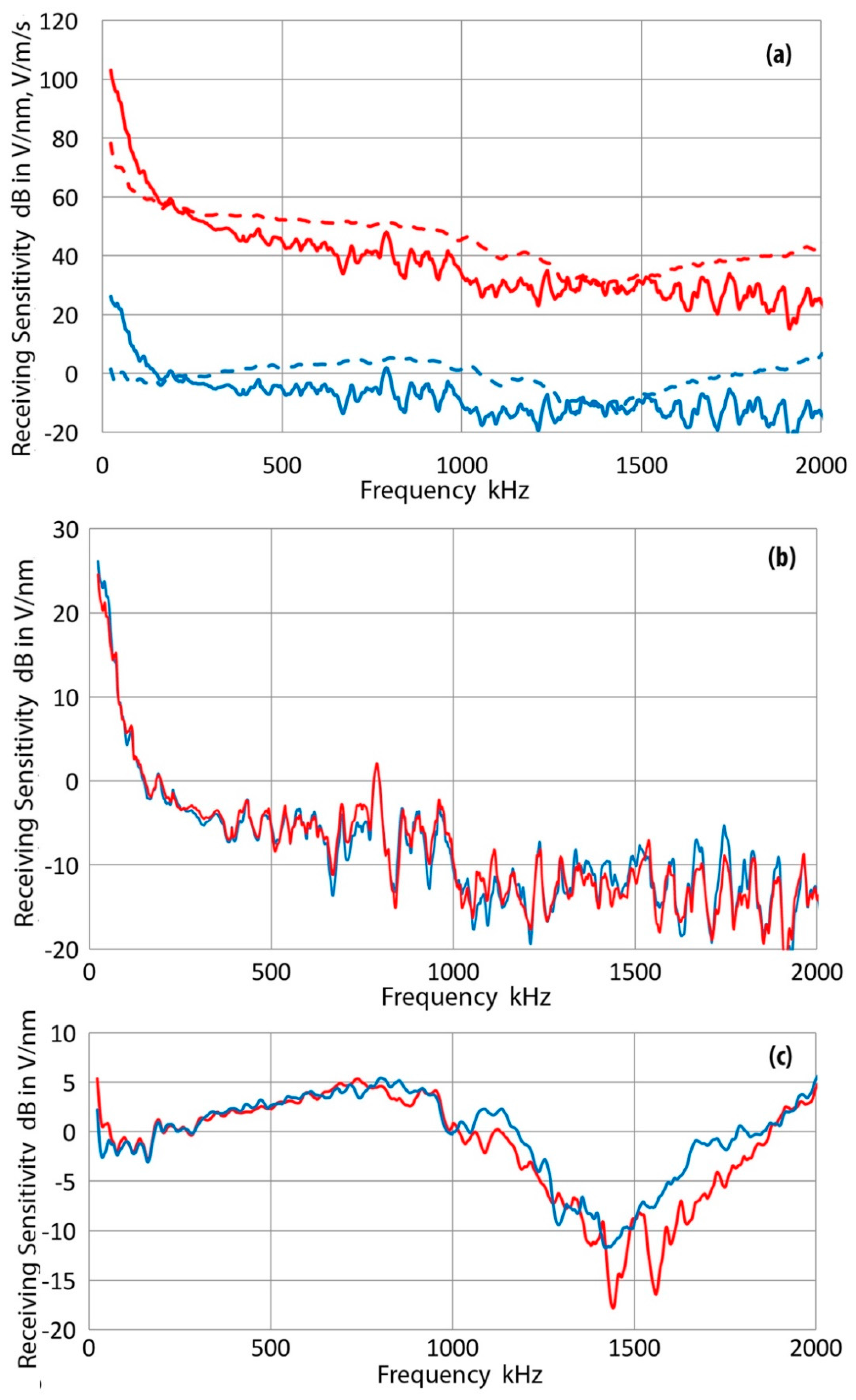
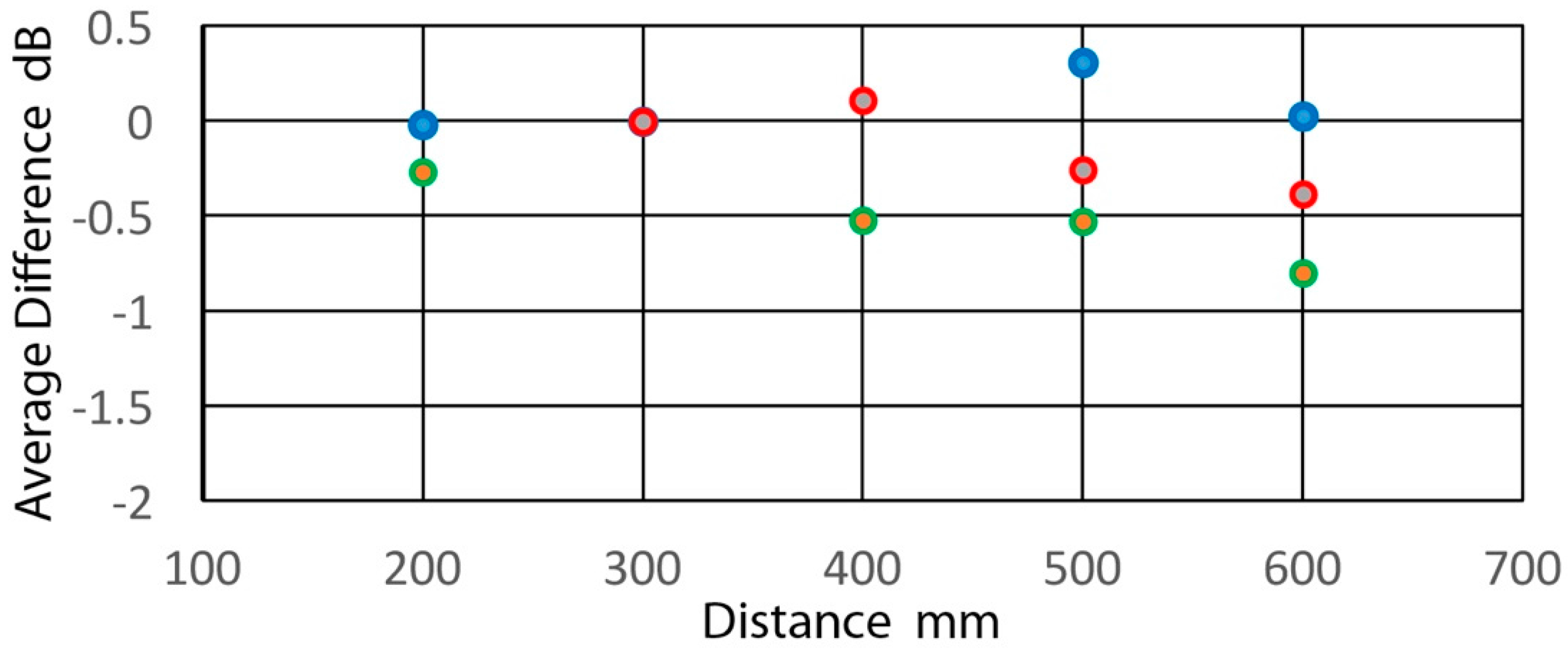
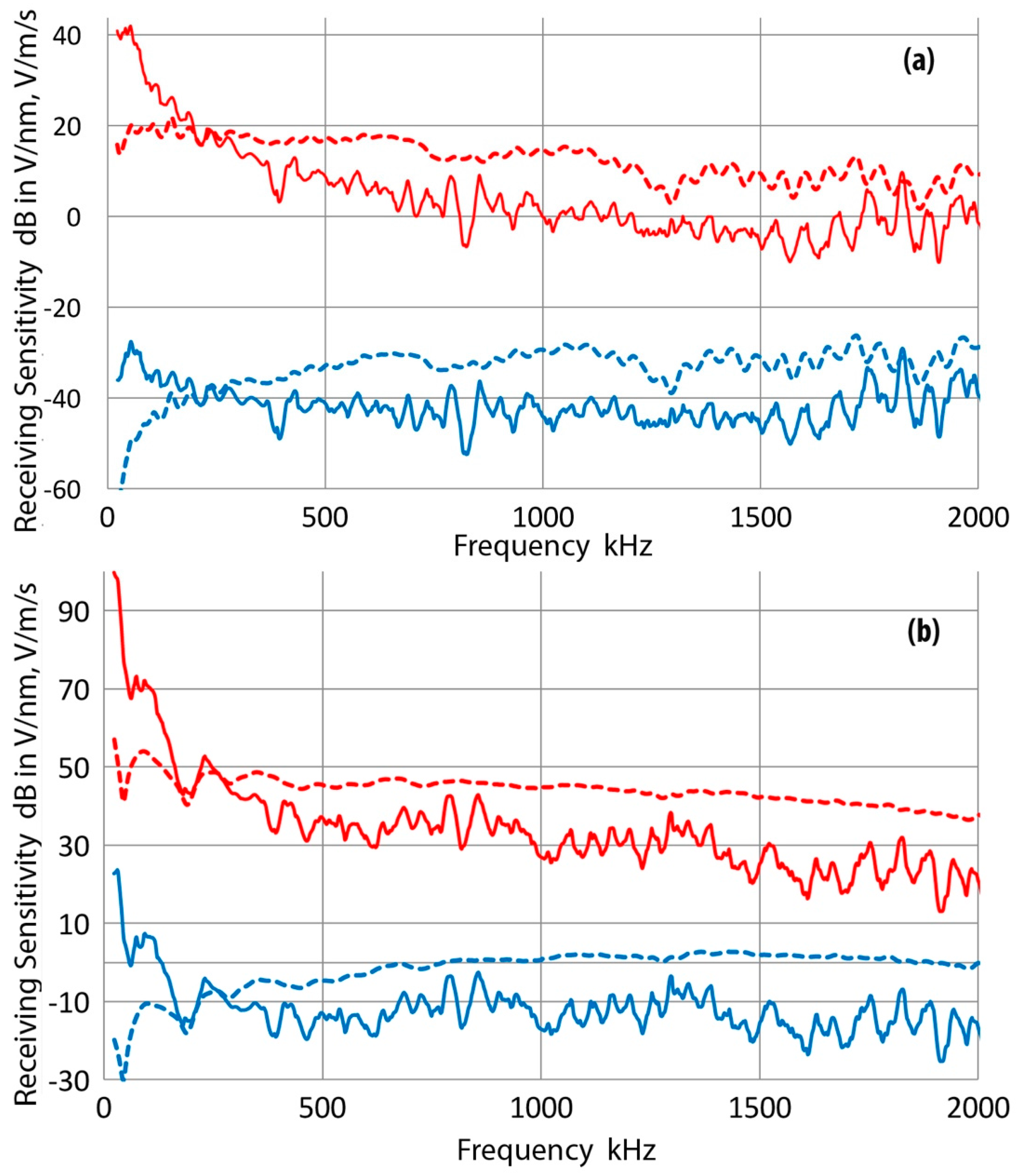
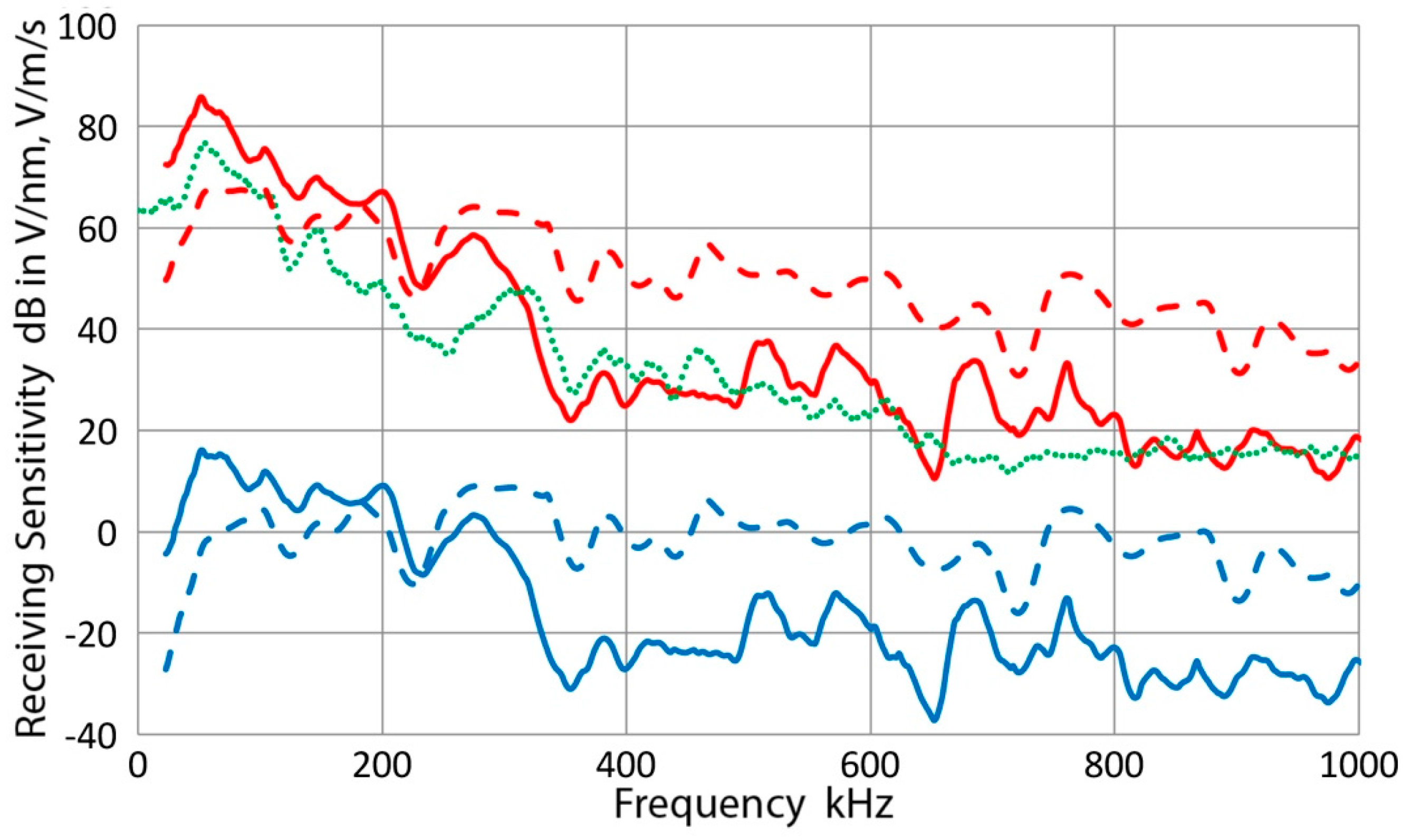
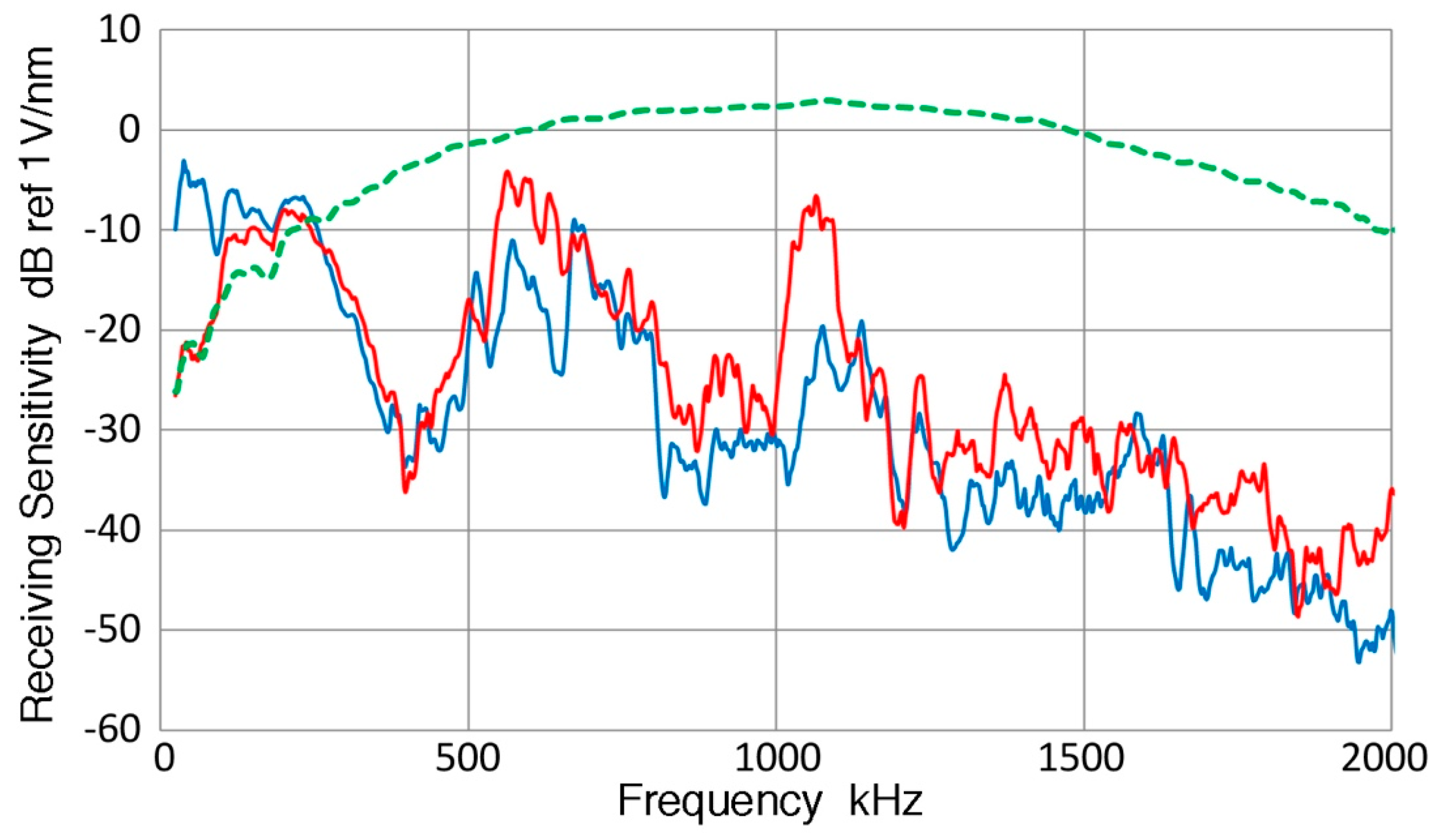
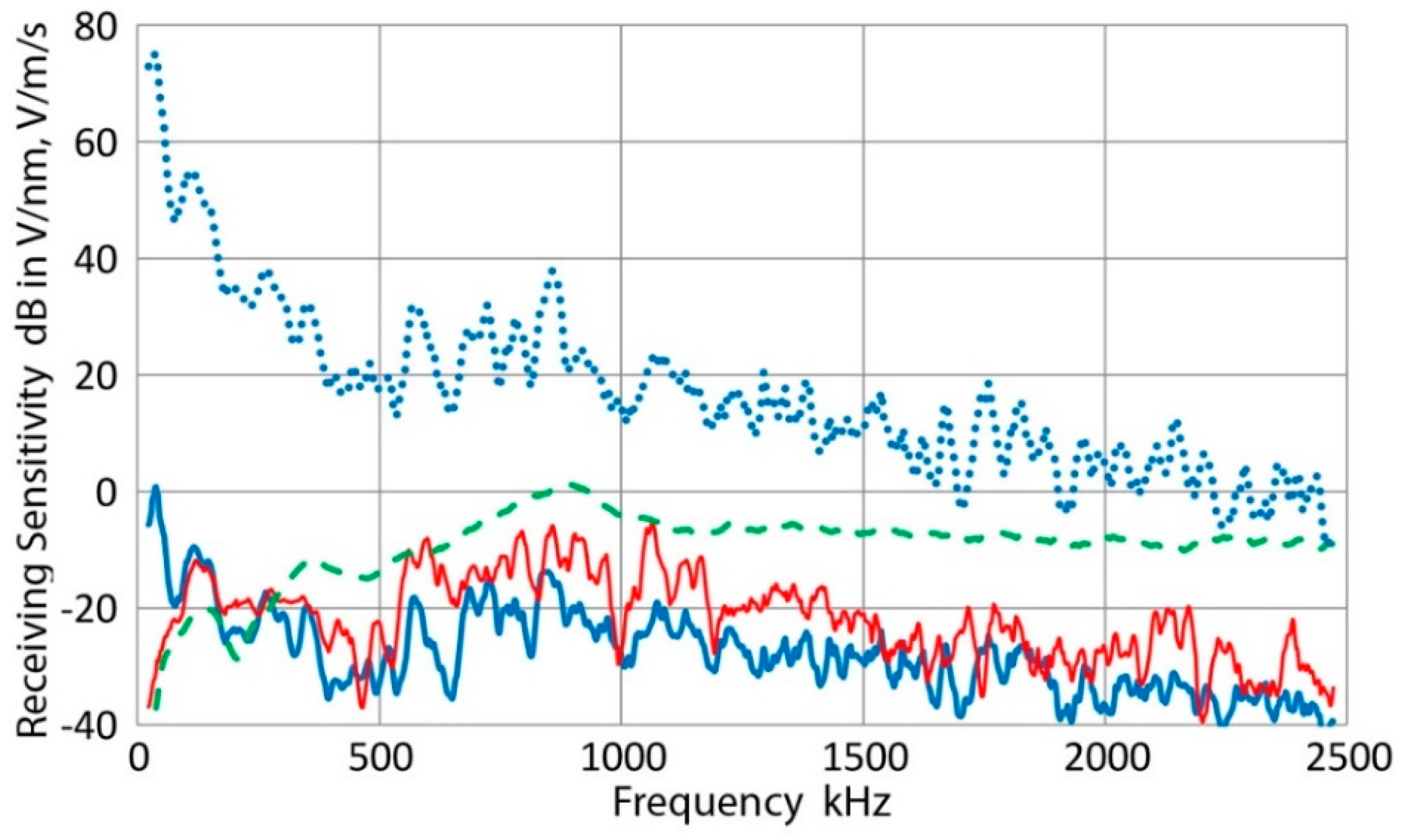
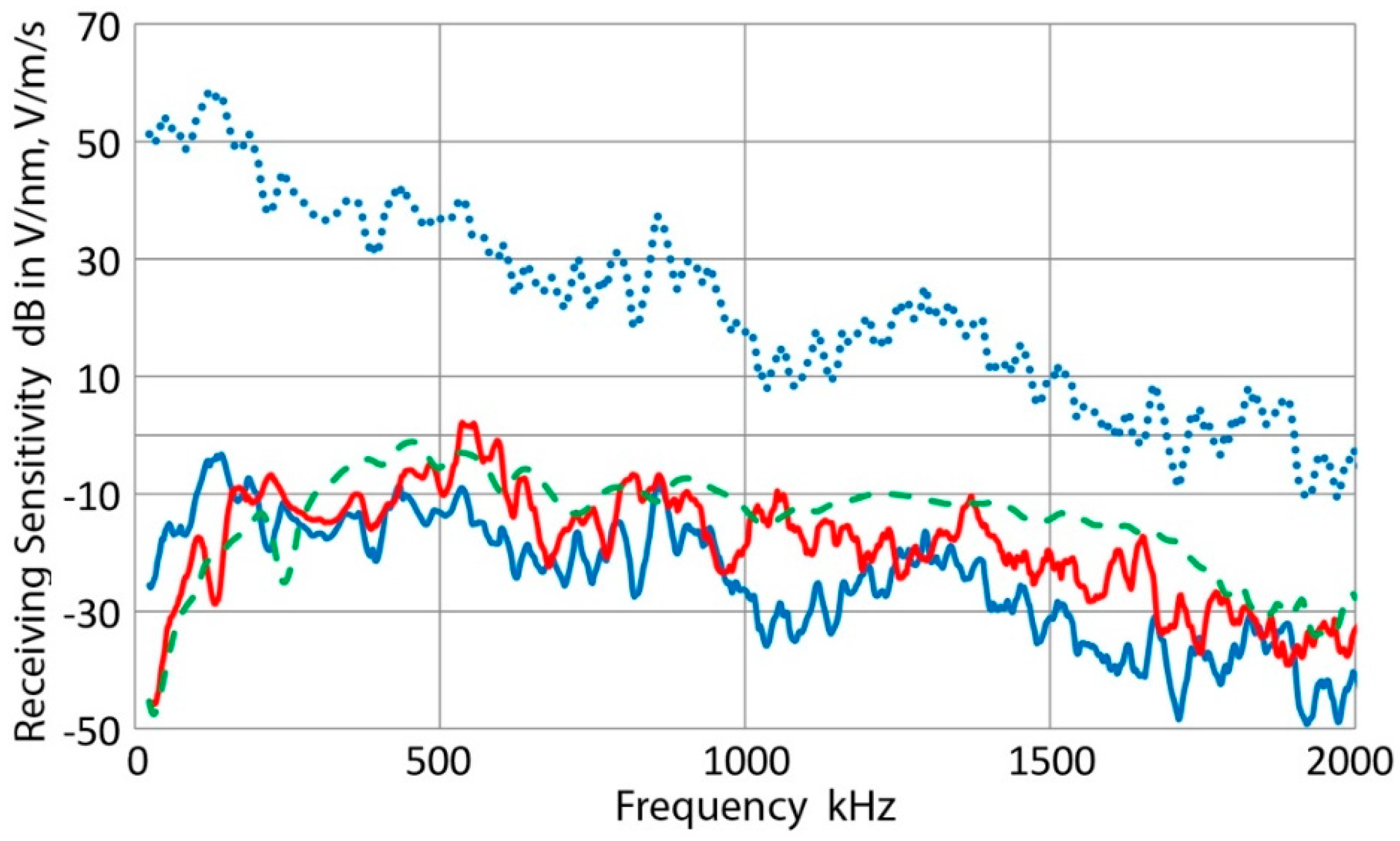
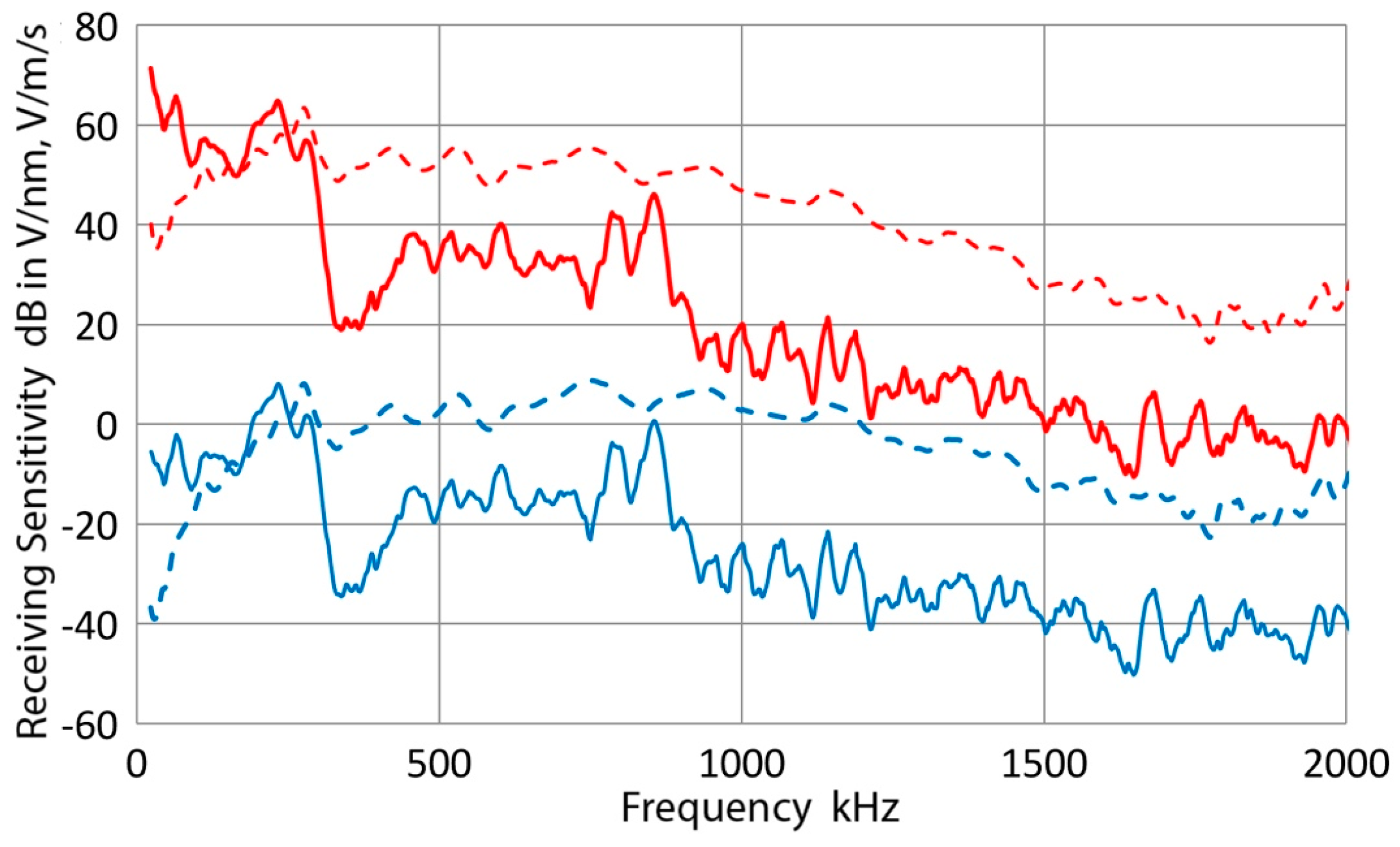
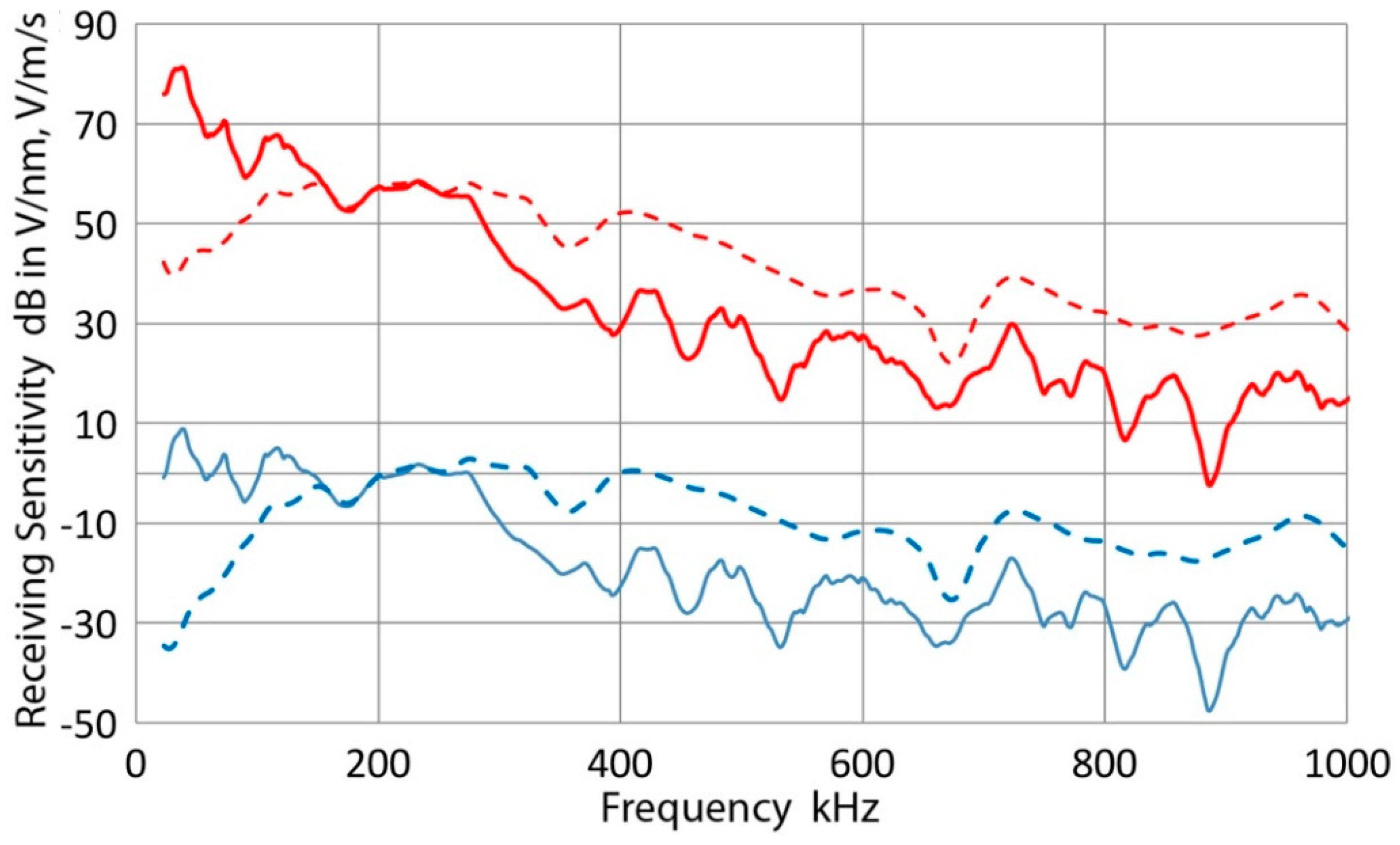

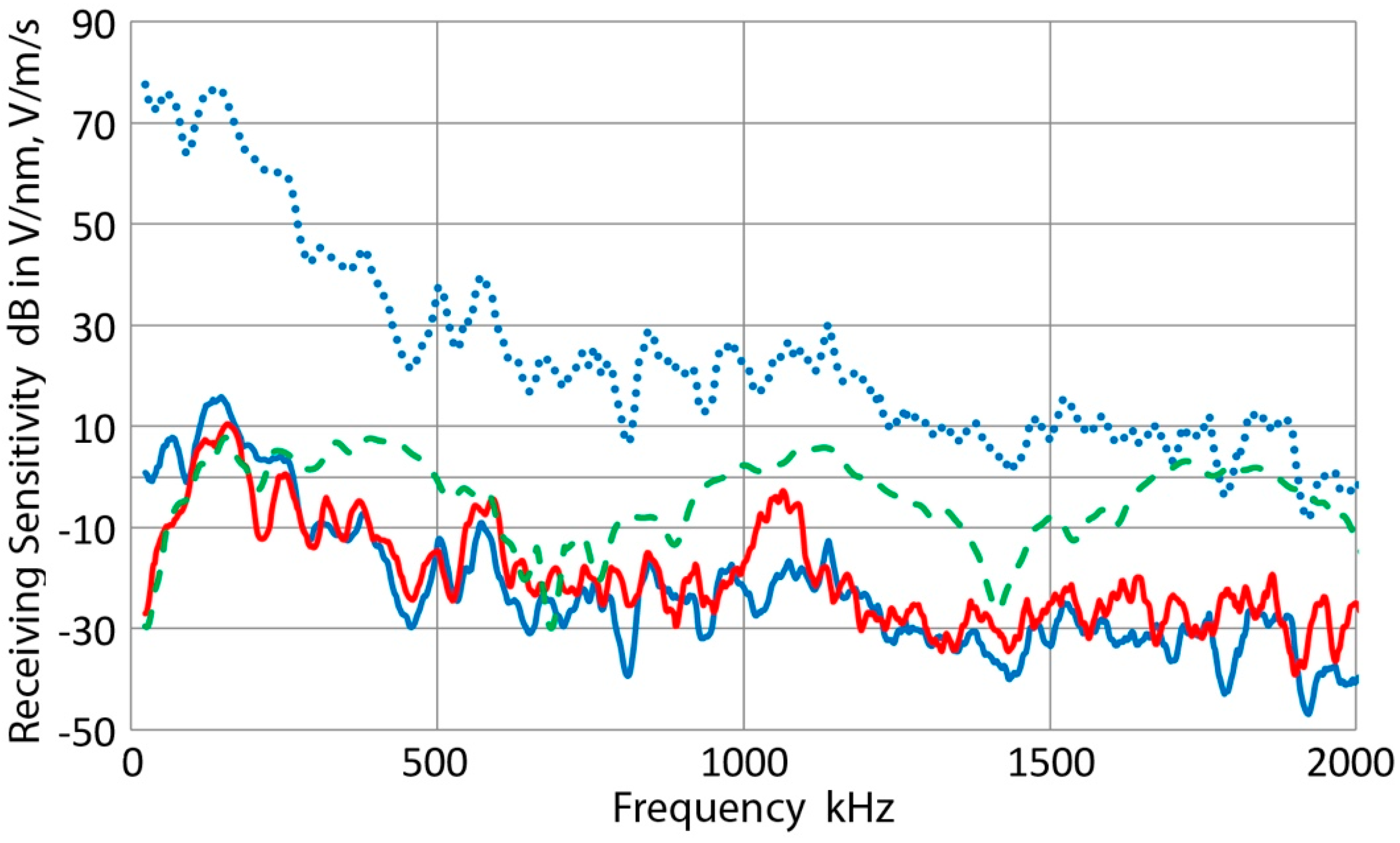
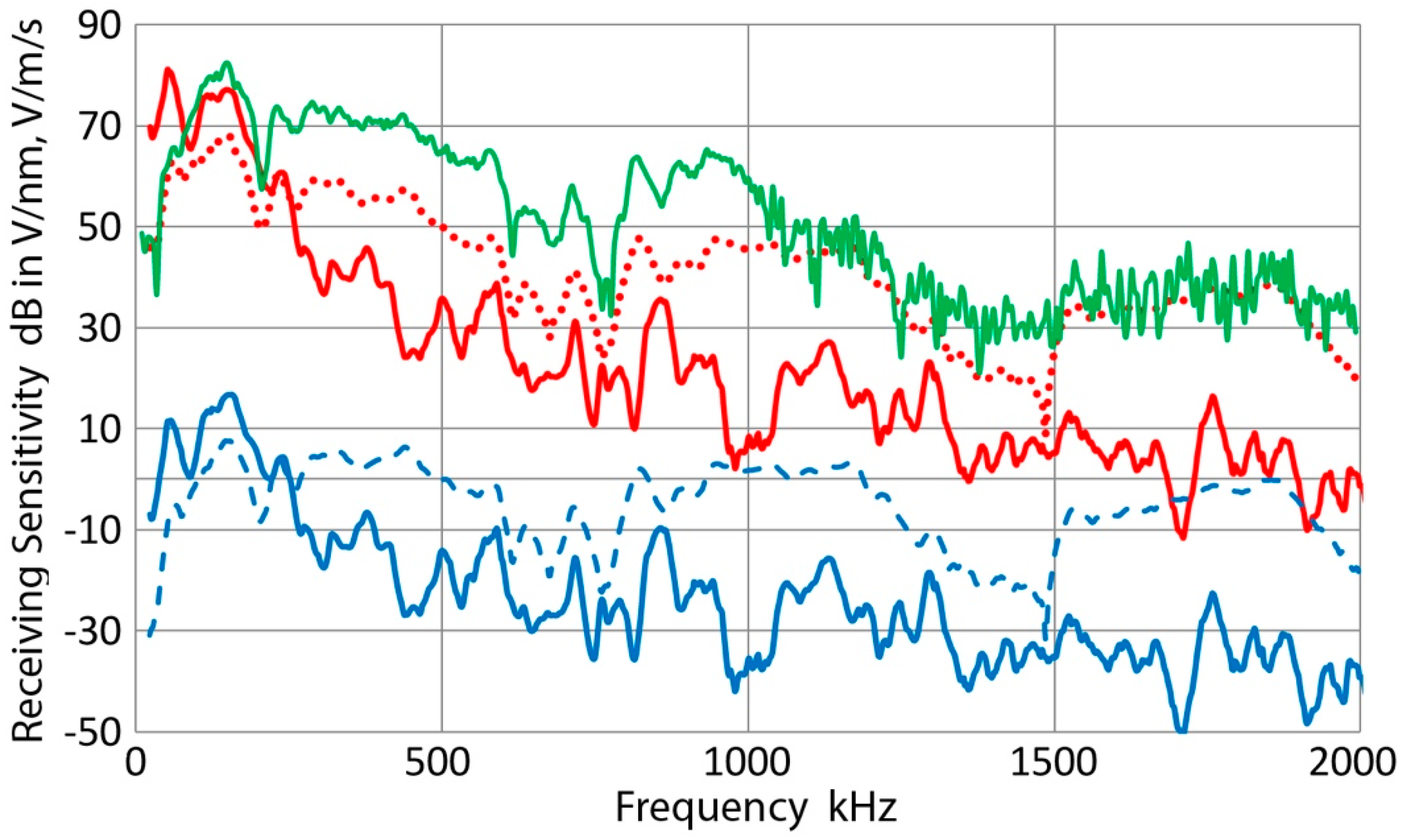

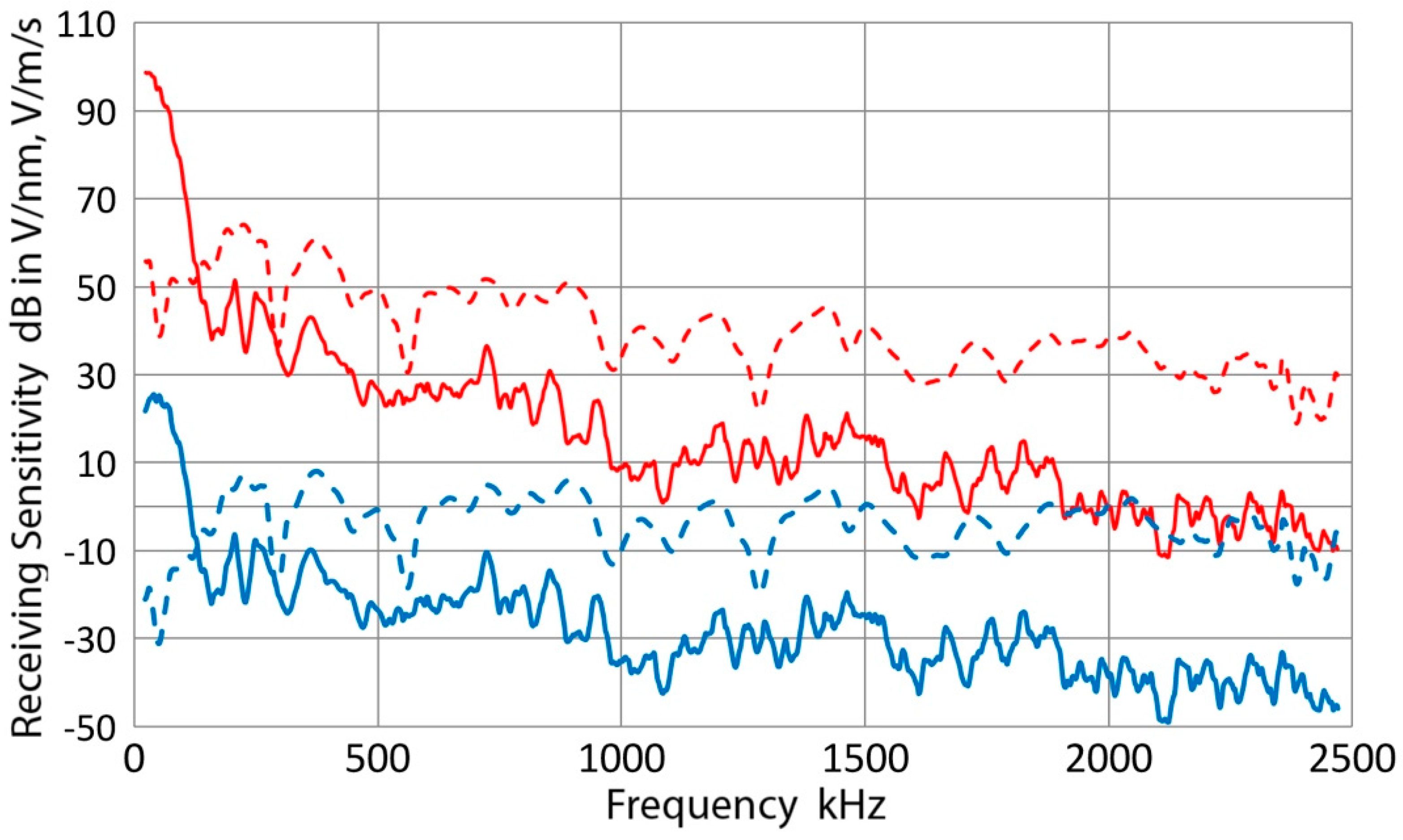
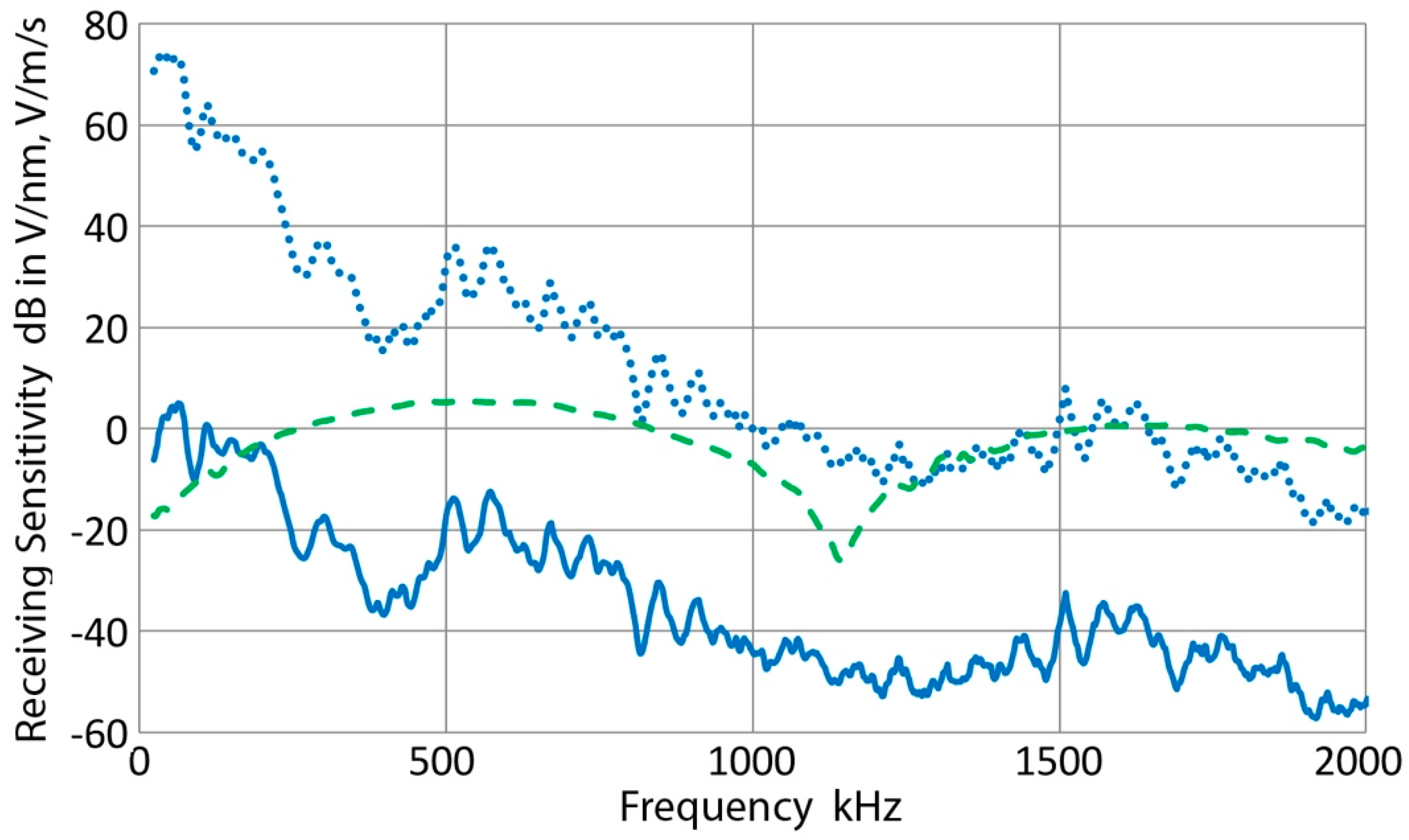
| Transducer Model | Manufacturer | Frequency MHz | Element Size (mm) |
|---|---|---|---|
| FC500 | AET Corp | 2.25 | 19 |
| B1080-LD | Digital Wave | 0.2–1.5 | 3.2 |
| SH-225 | Dunegan Engineering | 0.225 | 6.3 × 12.6 * |
| KRNBB-PCP or -PC | KRN Services | 0.1–1 | 1 |
| V101 | Olympus | 0.5 | 25.4 |
| V103 | Olympus | 1 | 12.7 |
| R6-alpha | Physical Acoustics | 0.06 | 12.7 |
| R15 | Physical Acoustics | 0.15 | 12.7 |
| R15-alpha | Physical Acoustics | 0.15 | 12.7 |
| F30-alpha | Physical Acoustics | 0.2–0.7 | 12.7 ** |
| Pico | Physical Acoustics | 0.5 | 3.2 |
| S9220 | Physical Acoustics | 0.9 | 8 |
| HD-50 | Physical Acoustics | 0.5 | 3 |
| WD | Physical Acoustics | 0.3–0.5 | 12.7 ** |
| µ30D | Physical Acoustics | 0.3 | 8 |
| Pinducer VP-1093 | Valpey-Fisher | 0.1–2 | 1.35 |
© 2017 by the authors. Licensee MDPI, Basel, Switzerland. This article is an open access article distributed under the terms and conditions of the Creative Commons Attribution (CC BY) license (http://creativecommons.org/licenses/by/4.0/).
Share and Cite
Ono, K.; Hayashi, T.; Cho, H. Bar-Wave Calibration of Acoustic Emission Sensors. Appl. Sci. 2017, 7, 964. https://doi.org/10.3390/app7100964
Ono K, Hayashi T, Cho H. Bar-Wave Calibration of Acoustic Emission Sensors. Applied Sciences. 2017; 7(10):964. https://doi.org/10.3390/app7100964
Chicago/Turabian StyleOno, Kanji, Takahiro Hayashi, and Hideo Cho. 2017. "Bar-Wave Calibration of Acoustic Emission Sensors" Applied Sciences 7, no. 10: 964. https://doi.org/10.3390/app7100964
APA StyleOno, K., Hayashi, T., & Cho, H. (2017). Bar-Wave Calibration of Acoustic Emission Sensors. Applied Sciences, 7(10), 964. https://doi.org/10.3390/app7100964






